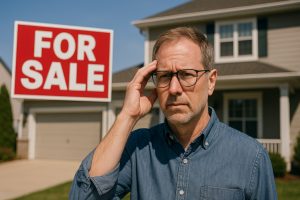**Understanding Senate Bill 326: What California Property Owners Need to Know**
Navigating the legal landscape of property management in California can be daunting, especially with the introduction of Senate Bill 326 (SB326). This legislation is a game-changer for property owners, particularly those involved with condominiums and Homeowners Associations (HOAs). But what exactly does SB326 entail, and how can property owners ensure compliance while protecting themselves from liability? Let’s dive into the details.
### The Core of SB326: Ensuring Safety and Integrity
At its heart, SB326 is all about safety. The bill mandates that all HOAs managing condominiums with exterior elevated elements (EEEs) like balconies, decks, and landings undergo rigorous inspections. These inspections must be performed by licensed structural engineers or architects, skilled professionals capable of detecting hidden risks such as rot and corrosion. The legislation’s aim is to prevent potential structural failures that could compromise safety and lead to costly liabilities.
### Key Requirements and Deadlines
Property owners must be proactive about compliance. The law specifies:
– **First Inspection Deadline**: All qualifying properties need an initial inspection by January 1, 2026.
– **Ongoing Inspections**: After the initial inspection, subsequent evaluations must occur every nine years.
This structured schedule helps ensure that safety is not just a one-time concern but an ongoing priority.
### Navigating Costs and Compliance
Complying with SB326 isn’t cheap. The costs can add up, given that thorough inspections and any necessary repairs or reinforcements can be expensive. However, understanding the financial implications early allows property owners to explore various financing options. Planning for these expenses is crucial in maintaining long-term financial health and avoiding last-minute financial strain.
### No Extensions: A Unique Challenge
A significant point to note is SB326’s firm stance on deadlines. Unlike Senate Bill 721, SB326 doesn’t allow for formal extension requests. This means property owners must be diligent in meeting set deadlines to avoid penalties. That said, some local agencies might offer informal extensions in specific circumstances, such as financial hardship or unforeseen events. Engaging local authorities early can be beneficial if unexpected challenges arise.
### Protecting Against Liability
Timely compliance with SB326 is the most effective shield against potential liabilities. By adhering to inspection schedules and addressing any identified safety concerns promptly, property owners can mitigate risk. This proactive approach not only helps avoid hefty fines but also ensures that residents’ safety remains a top priority.
### Routine Checks: Creating a Safety Culture
Beyond what the law requires, property owners can foster a culture of safety and proactive maintenance. Encouraging regular maintenance routines and visual checks can complement the formal inspections, catching minor issues before they become significant problems. Instituting a culture of constant vigilance and responsibility benefits everyone involved, from owners to tenants.
### Final Thoughts
Senate Bill 326 is a testament to the evolving landscape of property management legislation aimed at safeguarding community environments. For property owners, understanding and embracing the requirements of SB326 isn’t just about compliance—it’s about cultivating peace of mind, knowing that you’ve provided a safe living environment for your residents.
Stay informed, plan your resources thoughtfully, and consistently engage with professional inspectors. By prioritizing safety and compliance, property owners can confidently navigate the complexities of SB326 while safeguarding both their investments and their residents’ well-being.
If you have any questions or need help with your rental property feel free to reach out to our team of experts to help. Consultations are always complementary.


